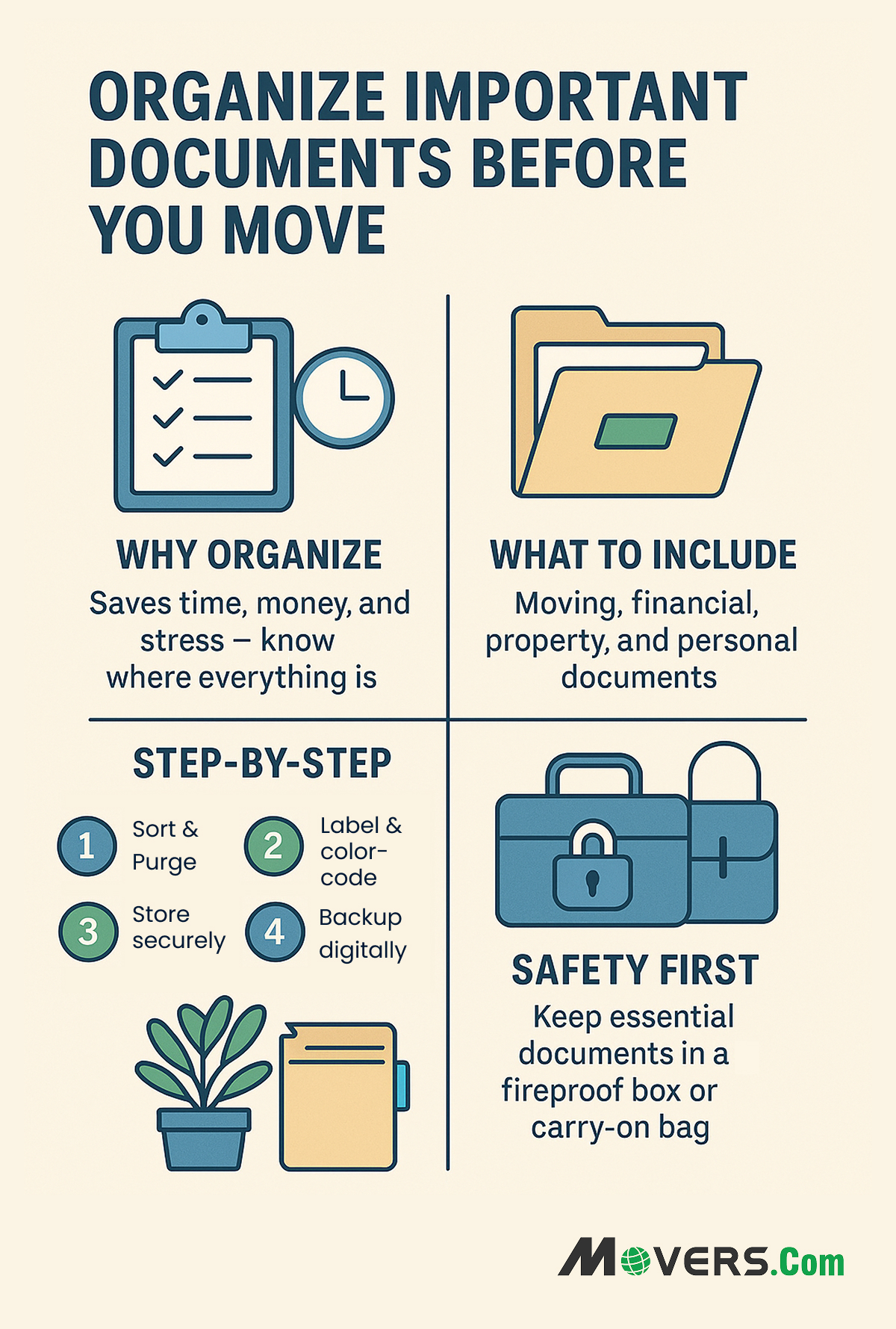Planning and preparing for your move can come with a lot of chaos.
It's easy to forget those stacked filing cabinets in your closet containing just about every important piece of paper you've ever received.
From receipts and contracts to house deeds and car titles, everything needs to be moved.
While you can just as easily load filing cabinets and boxes of paper documents onto the moving truck, chances are high that those documents are disorganized.
You also may have heaps of newspapers and magazines scattered all over your house that should be organized or thrown away before you move.
Although the process of organizing documents sounds dreadfully boring, taking the time to organize your important documents before you move will help you in the future.
This way, after you move into your new home, you will know exactly where every important file or document can be found.
Why You Should Organize Important Documents Before Moving
Stay organized
This is the easiest to understand but most essential reason to organize before moving day.
It is important to keep your bills, invoices and receipts all in one easy-to-find location, so you can't misplace them.
Keeping them as organized as possible will reduce the amount of time you'll spend looking for them in your new home.
Spend more time on your move
A typical move is hectic and overwhelming.
The less time you spend searching for important documents like real estate paperwork, mortgage documents or moving contracts, the more time you'll have for other moving-related tasks.
Save money
Maintaining organized records and holding onto your important receipts and documents can save you money in the long run and help you deduct taxes when the time comes.
Most of all, it can possibly come in handy during emergency situations. If something happens to your home or your car, being able to instantly locate all of your insurance documents will be important.
Different Types of Documents and Paperwork to Organize
Before you actually begin organizing your documents, you should know what type of documents to look out for.
Here’s a list of the different categories your documents may fall under and what they consist of:
-
Moving documents, such as the moving contract, bill of lading, inventory list, and written estimates.
-
Financial documents, such as credit card bills, checking/savings account statements, loan papers, receipts for taxes, and income tax papers.
-
Property-related documents, such as lease documents, selling and buying agreements, insurance coverage for home and auto, warranties, vehicle registration.
-
Contractual documents, such as contract tenure documents, warranties for electronics, and important invoices.
-
Personal documents, such as birth certificates, passports, marriage or divorce certificates (for deceased spouse or relatives), military documents, veterinary information for pets, vaccine information for children, driver’s license/organ donor cards, magazine subscriptions, medical records, prescriptions, and school records.
Steps to Organize Your Important Documents
Gather them together
Separate them into two piles: important versus not-important.
This will help you determine which documents are essential enough to keep, and which documents are just clutter that you need to toss out.
TIP: If you are unsure of anything, set it aside for later. You don't want to make the mistake of accidentally discarding a document that you needed.
Keep vital documents accessible
Keep the vital documents that you need to access frequently in a secure and easy-to-reach location separate from all of your other documents.
Create a filing system
Create a filing system to stay organized during and after your move.
Keep each category of papers in their own labeled, color-coded files or boxes.
Consider using bright and distinct primary colors such as red, yellow, green, and blue.
TIP: There are many methods of organization you can use such as order of importance, chronological or alphabetical.
You can also break your documents down into sub-categories such as year or month.
Use a secure container
Use a secure container that is lockable, such as a fire-resistant safe or sturdy filing cabinet that has ample room for hanging folders.
This is one of the most important ways to maintain an organized and secure collection of documents.
Having a back-up, duplicate copy of your most important papers will help you out a lot if you ever misplace anything.
If you can’t make a copy of every single document you have, copy at least the most vital documents.
Digital records of important documents are also convenient, because they usually cannot be entirely destroyed by accident and are recoverable.
Conclusion
Organize your important documents now to save time and reduce stress, so that you are prepared for every situation. A little effort now will pay off greatly during the period of transition into your new home.
Ready to make your move hassle-free?
Find trusted movers, get free quotes, and expert tips at movers.com for a stress-free move. Start planning today!
